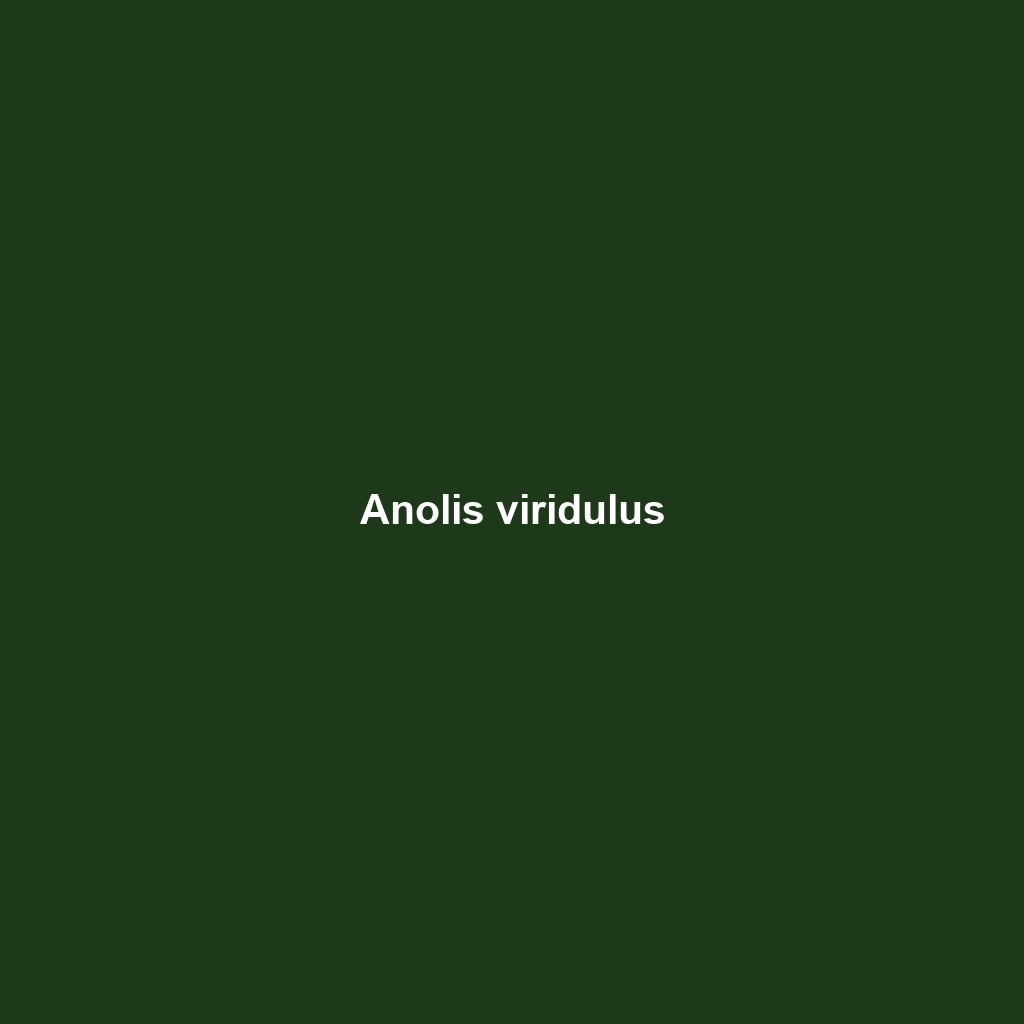Anolis vittigerus: A Comprehensive Overview
Common Name: Anolis vittigerus
Scientific Name: Anolis vittigerus
Habitat
Anolis vittigerus, commonly known as the Vittiger Anole, is primarily found in the tropical and subtropical regions of Central America, particularly in countries such as Costa Rica, Nicaragua, and Honduras. This species prefers humid environments like rainforests, where it can often be seen basking in the sun on tree trunks and branches.
Physical Characteristics
The Vittiger Anole displays remarkable physical attributes that differentiate it from other anole species. Adult males typically measure between 5 to 6 inches in length, including their tails. They exhibit a vibrant coloration, predominantly green with distinctive brown or black markings, which aid in camouflage. Their elongated bodies and large, expressive dewlap, which can be bright orange or yellow, are notable features that play crucial roles in communication and mating displays.
Behavior
Anolis vittigerus exhibits various fascinating behaviors that intrigue researchers and enthusiasts alike. This species is primarily diurnal, showcasing increased activity during the day. They are known for their territorial behavior, where males engage in displays of dominance by extending their dewlaps and performing push-up motions. Additionally, they are excellent climbers and can often be observed foraging for food in the foliage.
Diet
The diet of Anolis vittigerus mainly consists of small insects and invertebrates, such as crickets, moths, and ants. These lizards are opportunistic feeders, and their foraging techniques involve keen eyesight and agile movements to catch prey. Their dietary habits are essential for controlling insect populations within their habitat.
Reproduction
Anolis vittigerus typically breeds during the wet season, which varies by region. Females lay 1 to 2 eggs per clutch in hidden locations in the vegetation. The incubation period lasts around 6 to 8 weeks, after which hatchlings are independent and must fend for themselves immediately upon emergence. Notably, males often exhibit courting behaviors that include push-ups and color displays to attract females during the breeding season.
Conservation Status
The conservation status of Anolis vittigerus is currently classified as Least Concern by the International Union for Conservation of Nature (IUCN). However, habitat destruction due to deforestation and climate change poses potential threats to their population in the long term. Continuous monitoring and conservation efforts are essential to ensure their survival.
Interesting Facts
One intriguing fact about Anolis vittigerus is its ability to change color slightly, allowing it to adapt to its environment and evade predators. Furthermore, this lizard possesses a remarkable ability to regenerate its tail, which is a survival mechanism against predators.
Role in Ecosystem
Anolis vittigerus plays a vital role in its ecosystem as both a predator and prey. By controlling insect populations, they contribute to the ecological balance. Additionally, they serve as a food source for larger predators, thus playing an essential role in the food web within their environment.
